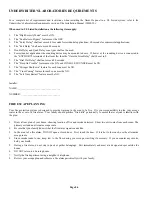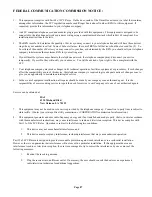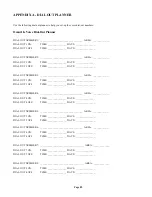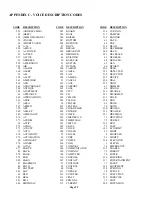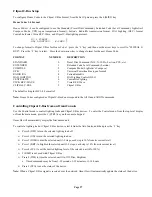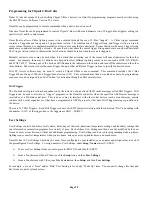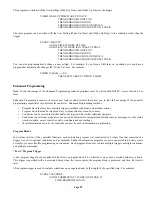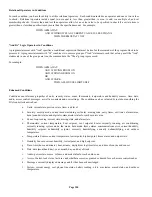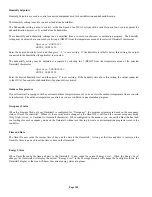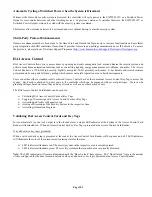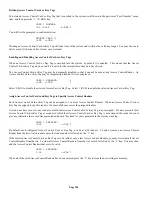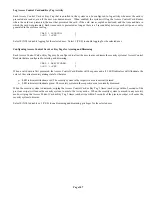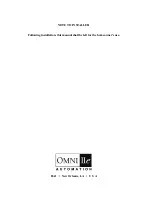
Page 100
Relational Operators in Conditions
For each condition, you have the ability to utilize relational operators. Each condition includes an operator and one or two values
to check. Relational operators include equal to, not equal to, less than, greater than, is even, is odd, is a multiple of, and set
membership checks. Greater than and less than operators allow for an extra value to be specified to check if a certain item is
greater than or less than another item by more than the specified amount. For example:
WHEN
ARM
AWAY
AND IF WINDOW FLAG CURRENT VALUE IS LESS THAN 10
THEN THERMOSTAT 1 OFF
“And/Or” Logic Operators in Conditions
A program statement with “And” specifies a conditional expression that must be true for the remainder of the program block to be
processed. A program statement with “Or” combines two or more groups of “And” statements, such that as long as all the “And”
statements in one of the groups are true, the commands in the “Then” group is processed.
For example:
WHEN ARM AWAY
AND IF LIVING ROOM ON
AND IF DINING ROOM ON
OR
AND IF DARK
THEN
ALL
HOUSE
LIGHTS
OFF
Enhanced Conditions
Conditions can reference properties of units, security status, zones, thermostats, temperature and humidity sensors, time, date,
audio, access control, messages, as well as constants and user settings. The condition can be evaluated by just about anything the
HAI controller knows about.
a.
Units: current state, previous state, timer, and level.
b.
Security: security mode, current mode including exit delay, arming code, entry timer, exit timer, alarm status,
horn (sounder) status, and digital communicator status for each security area.
c.
Zones: loop reading, current state, arming state, and alarm state.
d.
Thermostats: current temperature, heat setpoint, cool setpoint, heater currently running, air conditioning
currently running, system mode, fan mode, hold mode, freeze alarm, communications error, current humidity,
humidify setpoint, dehumidify setpoint, currently humidifying, currently dehumidifying, and outdoor
temperature.
e.
Temperature Sensors: current temperature, low setpoint, high setpoint, freeze alarm, and output state.
f.
Humidity Sensors: current humidity, low setpoint, and high setpoint.
g.
Time: time (hour and minute), hour, minute, daylight saving time status, and time of sunrise and sunset.
h.
Date: date (month and day), year, month, day, and day of week.
i.
Audio: power state, source, volume, and mute status for each audio zone.
j.
Access Control: lock status, last user, and whether access was granted or denied for each access control reader.
k.
Messages: currently displayed message and if it has been acknowledged.
l.
System: current energy cost, phone line status, battery reading, ok to arm status, armed status, and outdoor
temperature.
Summary of Contents for OMNI IIe
Page 2: ...Copyright 2001 2009 Home Automation Inc All Rights Reserved ...
Page 116: ......
Page 117: ......

